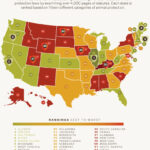In an era where social media dominates the landscape of communication and information sharing, harnessing its power to raise awareness for animal cruelty has never been more crucial. With billions of active users globally, platforms such as Facebook, Instagram, Twitter, and TikTok can serve as invaluable tools for advocates aiming to combat the abhorrent acts of abuse inflicted upon animals. But how does one effectively employ social media in this noble endeavor? What strategies can be adopted to convert virtual engagement into tangible change? Herein lies a challenge: the sheer saturation of content on these platforms can easily drown out even the most compelling messages. Yet, with the right approach, your voice can resonate clearly in this cacophony of information.
First and foremost, it’s essential to understand the significance of storytelling. Every animal abuse case carries a narrative that deserves to be told. Utilizing vivid descriptors and emotional appeals can transform a mere statistic into a poignant tale. For instance, instead of stating that “4 million animals are abused each year,” share the story of a single animal who has endured suffering. Describe the despair in their eyes and the warmth of their hopeful hearts. The particulars of individual stories create an emotional connection that transcends the limits of a simple number, prompting followers to empathize and, ultimately, act.
Furthermore, visual content significantly amplifies engagement. Images and videos have the power to evoke visceral reactions that text alone cannot achieve. A poignant image of an animal in distress can move viewers profoundly, often inspiring them to share those images to spread awareness. However, it is imperative to approach such content ethically; graphic depictions can be effective but may also alienate or desensitize some audiences. Balancing impactful imagery with sensitivity to viewers’ emotional thresholds is essential for maintaining engagement.
To further expand your reach, collaboration is an indispensable asset. Partnering with influencers who have established followings and share a commitment to animal rights can help amplify your message far beyond your immediate social circle. Choose influencers whose values align with your mission, ensuring authenticity in the partnership. Collaborative efforts can range from co-hosting webinars to creating joint campaigns highlighting the cause, thus weaving a larger tapestry of collective awareness.
Moreover, engaging with local communities can foster a sense of kinship and commitment to the cause. Utilize social media to connect with local animal shelters, rescue organizations, and community groups. Organize events that facilitate in-person interactions, such as volunteer days or fundraising events. Documenting these activities on social media not only heightens visibility but also cultivates a community of individuals invested in making a difference. Live-streaming these events can provide a real-time perspective on the impact being made, further encouraging participation and donations.
Additionally, creating informative content that educates rather than merely shocks can be a powerful tool for raising awareness. Infographics, articles, and blogs discussing the nuances of animal cruelty can offer followers insight into the complexities surrounding animal welfare. Topics might include the psychological effects of animal abuse, the legislation surrounding animal rights, or tips for responsible pet ownership. When followers are armed with knowledge, they are better equipped to advocate for change, fostering a more informed and proactive community.
Engagement goes beyond merely posting content; it requires active participation with your audience. Questions can prompt discussions and encourage followers to share their experiences or opinions on related matters. For instance, posing a playful question such as, “If your pet could sign a petition, what cause would they champion?” can evoke creativity and lead to meaningful dialogue. This kind of interactive content fosters an inclusive environment, allowing followers to feel valued and understood.
To illustrate a commitment to eradicating animal cruelty, leveraging hashtags can amplify your message and connect with a broader audience. Craft specific hashtags for campaigns while also utilizing popular ones associated with animal rights. This dual approach can ensure your content is seen by individuals searching for related materials. Research trending topics and capitalize on them by adding your unique angle, making your cause a focal point of trending discussions.
One cannot underestimate the influence of calls to action. Phrasing your posts with compelling calls to action encourages followers to not only share but also take immediate steps towards impact. Whether it’s signing a petition, donating to a shelter, or simply sharing information within their circles, calls to action galvanize individuals into tangible efforts. Over time, these small individual actions can aggregate into substantial change.
As you navigate the landscape of social media advocacy, be prepared for the inevitable challenges of misinformation and negativity. Engaging positively with dissenting opinions can foster dialogue, yet it’s vital to remain steadfast against toxic discussions. Utilize available resources to counter misinformation and remain focused on promoting empowerment and compassion over conflict.
Ultimately, the journey to raise awareness for animal cruelty through social media is fraught with both obstacles and opportunities. It requires creativity, dedication, and a willingness to connect with others who share the same fervor for justice. By utilizing storytelling, visual engagement, community collaboration, and educational content, advocates can cut through the noise and create a resonant call for compassion. The digital realm is vast, and your voice can echo within it; the question is, how will you choose to wield it? Will you join in the concerted effort to nurture a culture of empathy towards all beings, or will you let the challenge deter you? The choice is yours.








